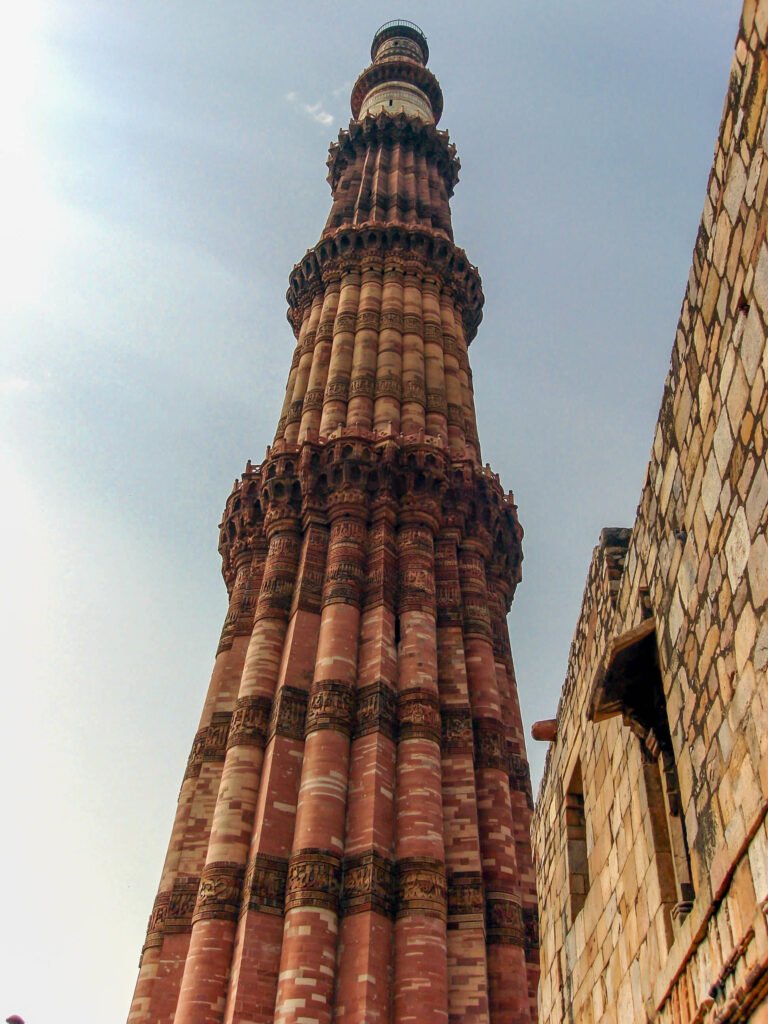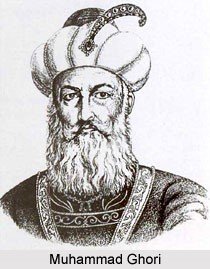Mu’izz Ad-Din Muhammad, also known as Muhammad of Ghor or Muhammad Ghori, was the Sultan of the Ghurid Empire from 1173 to 1202, and then sole ruler from 1202 to 1206.
Conditions of India during Ghauri’s attack
The Rajputs ruled over most of North and Central India. For example, the Chauhans dominated Delhi and Ajmer, with Prithviraj as the most powerful emperor. Gujarat was ruled by Solanki. Gahadwala governed Kannauj and Banaras.
Bundelkhand was governed by the Chandelas.
The northwest was ruled by Khusrav Shah, a weak Ghaznavid. Muslims governed Sindh and Multan.
Invasions of Muhammad Ghori
1. First invasion 1175 AD
Muhammad Ghauri’s initial expeditions targeted Multan and the fortress of Uch, aiming to reclaim Muslim territories in India and easily capture them.
2. Second invasion 1178 AD
After three years, he marched to Gujarat and attacked Anhilwara in 1178, but was defeated by king Mularaja II (Chalukya ruler) at the Battle of Mount Abu.
3. First Battle of Tarain or Thaneshwar 1191 AD
In 1179, he settled in Bhatinda and met Prithvi Raj Chauhan.
Muhammad Ghauri was defeated during the battle. The Rajputs defeated the Muslim army and won the war totally.
4. Second Battle of Tarain 1192 AD
Both armies met on the same battlefield, Terrain. This time Muhammad defeated
Prithviraj and was killed.
“This brought disaster to the entire Hindusthan” as per the Historian Dr. D.C. Ganguly.
5. Final invasion 1194 AD
In 1194, Muhammad Ghauri launched another expedition against Jayachandra of Kanuaj.
The battle between Muhammad and Jayachandra occurred near Chandawar on the Yamuna River between Eatwah and Kanuaj. King Jayachandra was defeated and died during the battle. Bhaktiyar Khalji, the general of Ghuari, created Bengal and Bihar. After Ghauri’s death in 1206, Qutubuddin Aibak assumed control of the Delhi Sultanate and established his empire.
The Ghurid Empire’s ascendancy in Medieval Central Asia can be attributed to a strategic
blend of military prowess, diplomatic acumen, and cultural patronage. These success factors
propelled the Ghurids to prominence, leaving a lasting impact on the region’s history.
Factors behind Ghurid’s Success
Historians like Hasan Nizami and Minhaj-i-Siraj believe Ghurid’s victory was primarily due to the Rajput feudal system and the Turkish Army’s mobility.
Colonial historians like Elphinstone and V. Smith argued that the chilly climate of the chilly Front provided advantages to the Turks. Meat eaters were more aggressive, stronger, and mobile, while Rajputs were vegetarians and less aggressive. This approach reveals a racial and colonial mindset.
According to Jadunath Sarkar, Turks achieved success by perfect equality, trust on God, and abstaining from alcohol. The Turks’ methods represented the Ghazi Spirit, resulting in triumph.
According to Mohmaad Habib and Prof Nizami, the defeat of Rajputs was primarily due to the social and caste system, with only Khastriyas participating in the conflict.
According to KM. Panikar, India’s cultural decline and lack of touch with the outside world contributed to the Rajputs’ downfall.
According to Prof. A.L. Srivastava, the Rajputs’ defeat was caused by a lack of political unity in India and weaker administrative standards. The Turks’ victory was fueled by their passion for glory and grandeur.
According to Satish Chandra, political weakness among Indian monarchs is a significant contributing factor. They failed to adapt Frontier’s policy and collaborate against common foes.
Modern historians attribute the downfall of Indian kings to internal feuds among rulers (e.g., Chandela vs Chauhans), disregard of frontiers, lack of control over foreign invasions, and a lack of a centralized army.
According to RC Majumdar, “Like a paralyzed body, the Indian people helplessly watched the conquerors march on.”
Turkey’s success was largely due to easy availability to guns, ammunition, equipment, and horses from Central Asia. Turkish military demonstrated greater fighting skills and technology compared to their Indian counterparts. The lack of tactical knowledge and communal cohesiveness in Indian society, particularly among Hindu communities, hinders a thorough comprehension of both positive and negative aspects of the global landscape.
Slave/ Ilbari Dynasty
Qutubuddin Aibak
In 1206, Qutubuddin Aibak established the Delhi Sultanate by declaring independence from the Ghurids. This establishment significantly impacted Indian society, administration, and culture. His capital was Lahore, and he was known as “Lakh Baksh” due to his progressive and open-minded views. Despite his efforts, he was unable to resolve the Sultanate’s troubles and passed away while playing Chaughan.

His architectural accomplishments include the Quwwat ul Islam Mosque in Delhi, Adhai din ka Jhopra in Ajmer, and the erection of the Qutub Minar in honor of Sufi saint Khwaja Qutubuddin Bakhtiyar Kaki. He also encouraged scholars such as Hasan Nizami (author of Tajul Masir) and Fakhre Muddhabir.
Pre & Mains : Buy History NCERT 11th class by R.S.Sharma for UPSC
History Optional : Buy A History of Ancient And Early Medieval India : From the Stone Age to the 12th Century By Upinder Singh
Feature Image Credit and License :- Wikimedia Commons license
Inline Image Credit and License :- Flickr (Contributed by Jorge Láscar ) license
